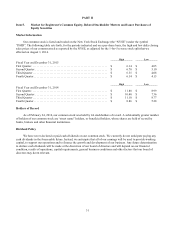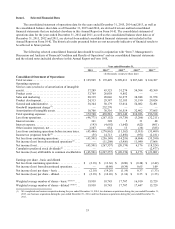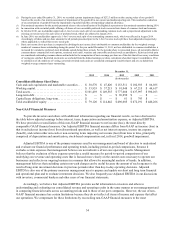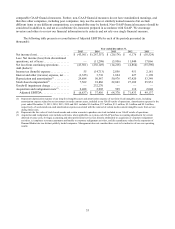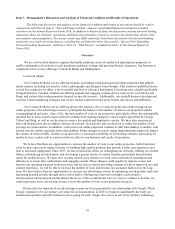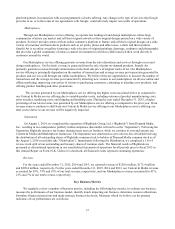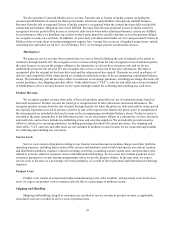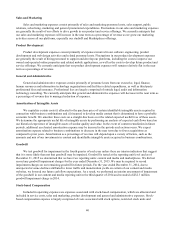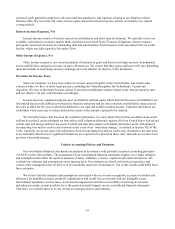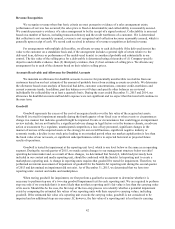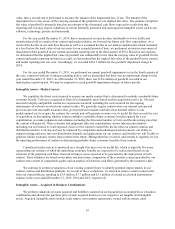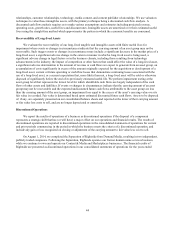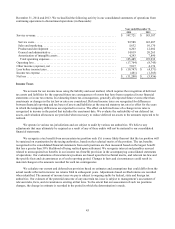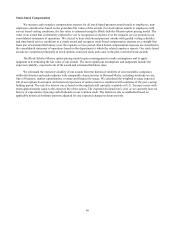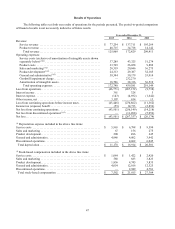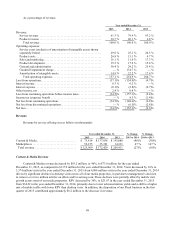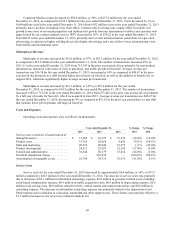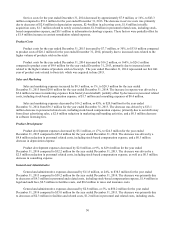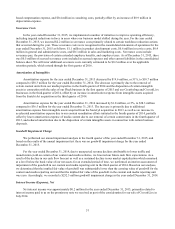Enom 2015 Annual Report Download - page 43
Download and view the complete annual report
Please find page 43 of the 2015 Enom annual report below. You can navigate through the pages in the report by either clicking on the pages listed below, or by using the keyword search tool below to find specific information within the annual report.41
restricted stock granted to employees, directors and non-employees, and expenses relating to our Employee Stock
Purchase Plan. We record the fair value of these equity-based awards and expenses at their cost ratably over related
vesting periods.
Interest Income (Expense), Net
Interest income consists of interest earned on cash balances and short-term investments. We typically invest our
available cash balances in money market funds and short-term United States Treasury obligations. Interest expense
principally consisted of interest on outstanding debt and amortization of debt issuance costs associated with our credit
facility, which was fully repaid in November 2014.
Other Income (Expense), Net
Other income (expense), net consists primarily of transaction gains and losses on foreign currency-denominated
assets and liabilities and gains or losses on sales of businesses. We expect that these gains and losses will vary depending
upon movements in underlying currency exchange rates and whether we dispose of any businesses.
Provision for Income Taxes
Since our inception, we have been subject to income taxes principally in the United States, and certain other
countries where we have or had a legal presence, including the United Kingdom, the Netherlands, Canada and
Argentina. We may in the future become subject to taxation in additional countries based on the foreign statutory rates
and our effective tax rate could fluctuate accordingly.
Income taxes are computed using the asset and liability method, under which deferred tax assets and liabilities are
determined based on the difference between the financial statement and tax bases of assets and liabilities using enacted
tax rates in effect for the year in which the differences are expected to affect taxable income. Valuation allowances are
established when necessary to reduce deferred tax assets to the amount expected to be realized.
We currently believe that based on the available information, it is more likely than not that our deferred tax assets
will not be realized, and accordingly we have taken a full valuation allowance against all of our United States federal and
certain state and foreign deferred tax assets. Federal and state laws impose substantial restrictions on the utilization of
net operating loss and tax credit carry-forwards in the event of an “ownership change,” as defined in Section 382 of the
Code. Currently, we do not expect the utilization of our net operating loss and tax credit carry-forwards in the near term
to be materially affected as no significant limitations are expected to be placed on these carry-forwards as a result of our
previous ownership changes.
Critical Accounting Policies and Estimates
Our consolidated financial statements are prepared in accordance with generally accepted accounting principles
(“GAAP”) in the United States. The preparation of our consolidated financial statements requires us to make estimates
and assumptions that affect the reported amounts of assets, liabilities, revenue, expenses and related disclosures. We
evaluate our estimates and assumptions on an ongoing basis. Our estimates are based on historical experience and
various other assumptions that we believe to be reasonable under the circumstances. Our actual results could differ from
these estimates.
We believe that the estimates and assumptions associated with our revenue recognition, accounts receivable and
allowance for doubtful accounts, goodwill, capitalization and useful lives associated with our intangible assets,
discontinued operations, income taxes, stock-based compensation and the recoverability of our long-lived assets
including our media content portfolio, have the greatest potential impact on our consolidated financial statements.
Therefore, we consider these to be our critical accounting policies and estimates.


